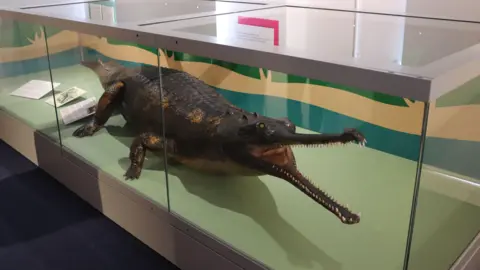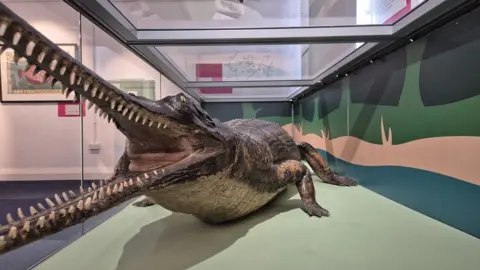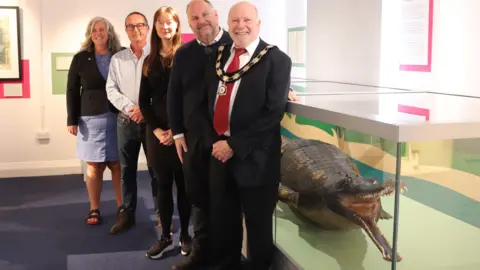'Swindon croc' returns after five-year absence
 Swindon Borough Council
Swindon Borough CouncilA much-loved crocodile is back on display at a town art gallery.
The stuffed gharial, a type of crocodile mainly found in India, returned to its display at Museum & Art Swindon after being absent for five years.
Fondly known as the Swindon Croc, the gharial has been in the council's possession since 1931 and has been displayed in a number of exhibitions throughout the years.
The gharial has had extensive restoration work done since it disappeared from view when the museum closed in 2020 and was welcomed back with an unveiling event earlier.
 Swindon Borough Council
Swindon Borough CouncilGharials are one of the longest living members of the crocodile family but are now an endangered species. It is estimated there are fewer than 250 still alive.
The Swindon gharial was originally a hunting trophy and its first known owner was Maj Morton Hiles, who lived in India between 1916 and 1922.
He later lived in Warminster and gave the gharial to Warminster School before it was passed to the museum in 1931.
The new exhibition at Museum & Art Swindon explores the history of the gharial, the moral, ethical and legal considerations of protecting a critically-endangered species, where it can currently be found in the wild and what it means to the people of Swindon.
The new exhibition also highlights creatures in Wiltshire that are on the critical list such as the West European Hedgehog and the Lapwing bird.
 Swindon Borough Council
Swindon Borough CouncilThe gharial was unveiled at the civic offices by Swindon Borough Council leader Jim Robbins, deputy mayor of Swindon Neil Hopkins and South Swindon MP Heidi Alexander.
Councillor Jim Robbins, said: "The gharial, or Swindon Croc as it's fondly known, is one of the most famous pieces in Swindon's collection and was the figurehead of the Save the Croc campaign when the Museum & Art Gallery closed at Apsley House in Old Town.
"The gharial is more than just a stuffed reptile in a museum and we want to make sure its long and complex history, which intertwines with Britain's past and the country's place in the world, is explored in the right way."
Follow BBC Wiltshire on Facebook, X and Instagram. Send your story ideas to us on email or via WhatsApp on 0800 313 4630.
